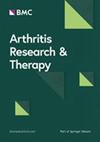Achievement of treatment targets and maintenance of response with upadacitinib in patients with moderate-to-severe rheumatoid arthritis in real-world practice: 1-year outcomes from the UPHOLD observational study
IF 4.9
2区 医学
Q1 Medicine
引用次数: 0
Abstract
Upadacitinib (UPA), an oral Janus kinase inhibitor, has shown efficacy with an acceptable safety profile in rheumatoid arthritis (RA) clinical trials. To assess the real-world effectiveness and safety of UPA in adults with moderate-to-severe RA in the UPHOLD observational study. Co-primary endpoints were: (i) proportion of patients achieving disease activity score in 28 joints using C-reactive protein (DAS28[CRP]) remission (< 2.6) at 6 months; and (ii) proportion of those patients maintaining remission at 12 months. Additional analyses included proportions of patients achieving and maintaining DAS28(CRP) low disease activity (LDA; ≤ 3.2), other composite measures of disease activity, and subgroup analyses by therapy strategy and prior treatment. Treatment-emergent adverse events (TEAEs) in the full analysis set (FAS; patients receiving ≥ 1 UPA dose) were reported through August 10, 2023. Co-primary and selected secondary endpoints were analyzed by modified non-responder imputation (mNRI) in modified (m)FAS1 (FAS patients who completed 6 months of treatment and had DAS28[CRP] data available, and those who discontinued before 6 months) and mFAS2 (mFAS1 patients who achieved remission at 6 months, completed 12 months of treatment, and had DAS28[CRP] data available, and those who discontinued between 6 and 12 months); and as observed (AO) in patients with non-missing data. Of 1719 participants, 1717 were enrolled; 1701 comprised the FAS. Overall, 400/1719 (23.3%) patients discontinued before 12 months. Of mFAS1 patients, 499 (mNRI: 499/1074 [46.5%]; AO: 499/902 [55.3%]) achieved DAS28(CRP) remission at 6 months; of mFAS2 patients, 269 (mNRI: 269/340 [79.1%]; AO: 269/317 [84.9%]) maintained remission at 12 months. DAS28(CRP) remission or LDA rates were consistent regardless of whether UPA was initiated and maintained as monotherapy or combination therapy. Similar responses were observed across prior treatment subgroups. Among selected TEAEs of special interest, herpes zoster and serious infection occurred at 3.12 and 2.62 events/100 patient-years, respectively. No new safety signals were identified. UPA demonstrated real-world effectiveness in moderate-to-severe RA, with approximately half of patients achieving DAS28(CRP) remission at 6 months and most maintaining remission through 12 months. The real-world benefit–risk profile of UPA remains favorable and is consistent with phase 3 clinical trial data. NCT04497597在现实世界的实践中,upadacitinib在中重度类风湿关节炎患者中的治疗目标的实现和反应的维持:来自sustain观察性研究的1年结果
Upadacitinib (UPA)是一种口服Janus激酶抑制剂,在类风湿性关节炎(RA)临床试验中显示出疗效和可接受的安全性。在一项观察性研究中,评估UPA治疗成人中重度RA的实际有效性和安全性。共同主要终点为:(i)在6个月时使用c -反应蛋白(DAS28[CRP])缓解的28个关节达到疾病活动性评分的患者比例(< 2.6);(ii) 12个月后维持缓解的患者比例。其他分析包括达到和维持DAS28(CRP)低疾病活动性(LDA)的患者比例;≤3.2),其他疾病活动度的综合测量,以及治疗策略和既往治疗的亚组分析。治疗不良事件(teae)在全分析集(FAS;截至2023年8月10日,报告了接受≥1剂量UPA的患者。共同主要终点和选定的次要终点通过改良的(m)FAS1(完成6个月治疗并有DAS28[CRP]数据可获得的FAS患者,以及在6个月前停止治疗的患者)和mFAS2(在6个月时达到缓解,完成12个月治疗并有DAS28[CRP]数据可获得的mFAS1患者,以及在6至12个月之间停止治疗的患者)的改良无应答归因(mNRI)进行分析;在数据不缺失的患者中观察到(AO)。在1719名参与者中,1717名被纳入;1701年组成了FAS。总体而言,400/1719(23.3%)患者在12个月内停药。mFAS1患者中,499例(mNRI: 499/1074 [46.5%]);AO: 499/902[55.3%])在6个月时达到DAS28(CRP)缓解;mFAS2患者269例(mNRI: 269/340 [79.1%]);AO: 269/317[84.9%]) 12个月后维持缓解。无论UPA是作为单药治疗还是联合治疗开始和维持,DAS28(CRP)缓解率或LDA率都是一致的。在先前的治疗亚组中观察到类似的反应。在选定的特别关注的teae中,带状疱疹和严重感染的发生率分别为3.12和2.62次/100患者年。没有发现新的安全信号。UPA在中重度RA中显示出真实的有效性,大约一半的患者在6个月时达到DAS28(CRP)缓解,大多数患者在12个月后保持缓解。UPA的实际获益-风险概况仍然有利,与3期临床试验数据一致。NCT04497597
本文章由计算机程序翻译,如有差异,请以英文原文为准。
求助全文
约1分钟内获得全文
求助全文
来源期刊

Arthritis Research & Therapy
RHEUMATOLOGY-
CiteScore
8.60
自引率
2.00%
发文量
261
审稿时长
14 weeks
期刊介绍:
Established in 1999, Arthritis Research and Therapy is an international, open access, peer-reviewed journal, publishing original articles in the area of musculoskeletal research and therapy as well as, reviews, commentaries and reports. A major focus of the journal is on the immunologic processes leading to inflammation, damage and repair as they relate to autoimmune rheumatic and musculoskeletal conditions, and which inform the translation of this knowledge into advances in clinical care. Original basic, translational and clinical research is considered for publication along with results of early and late phase therapeutic trials, especially as they pertain to the underpinning science that informs clinical observations in interventional studies.
 求助内容:
求助内容: 应助结果提醒方式:
应助结果提醒方式:


